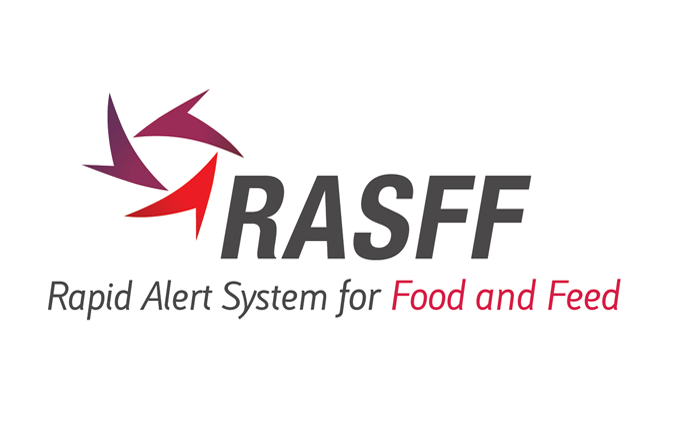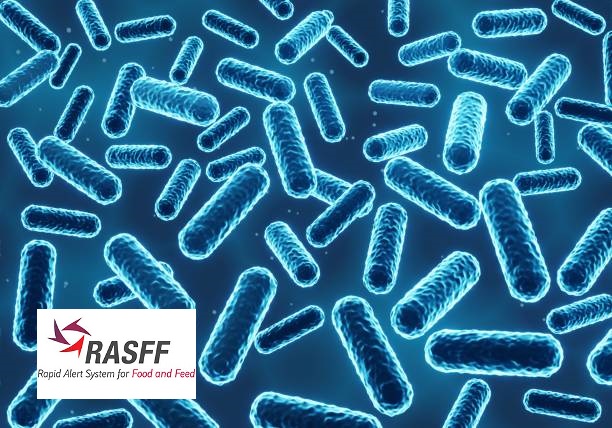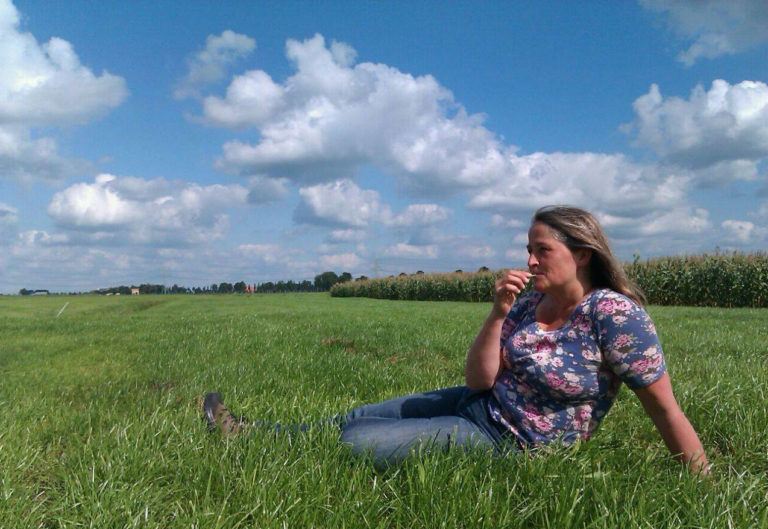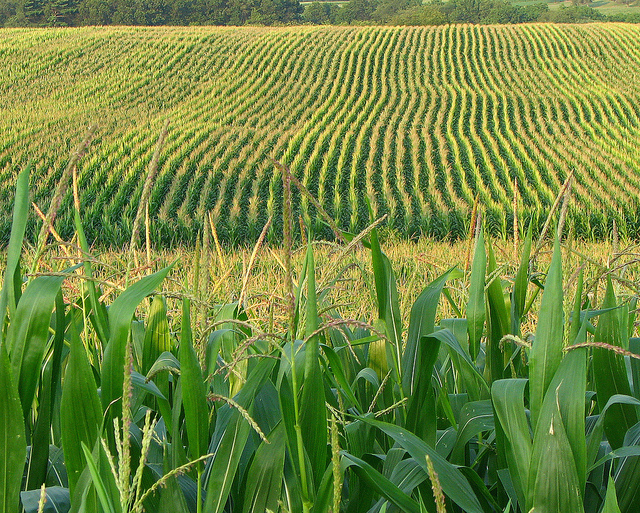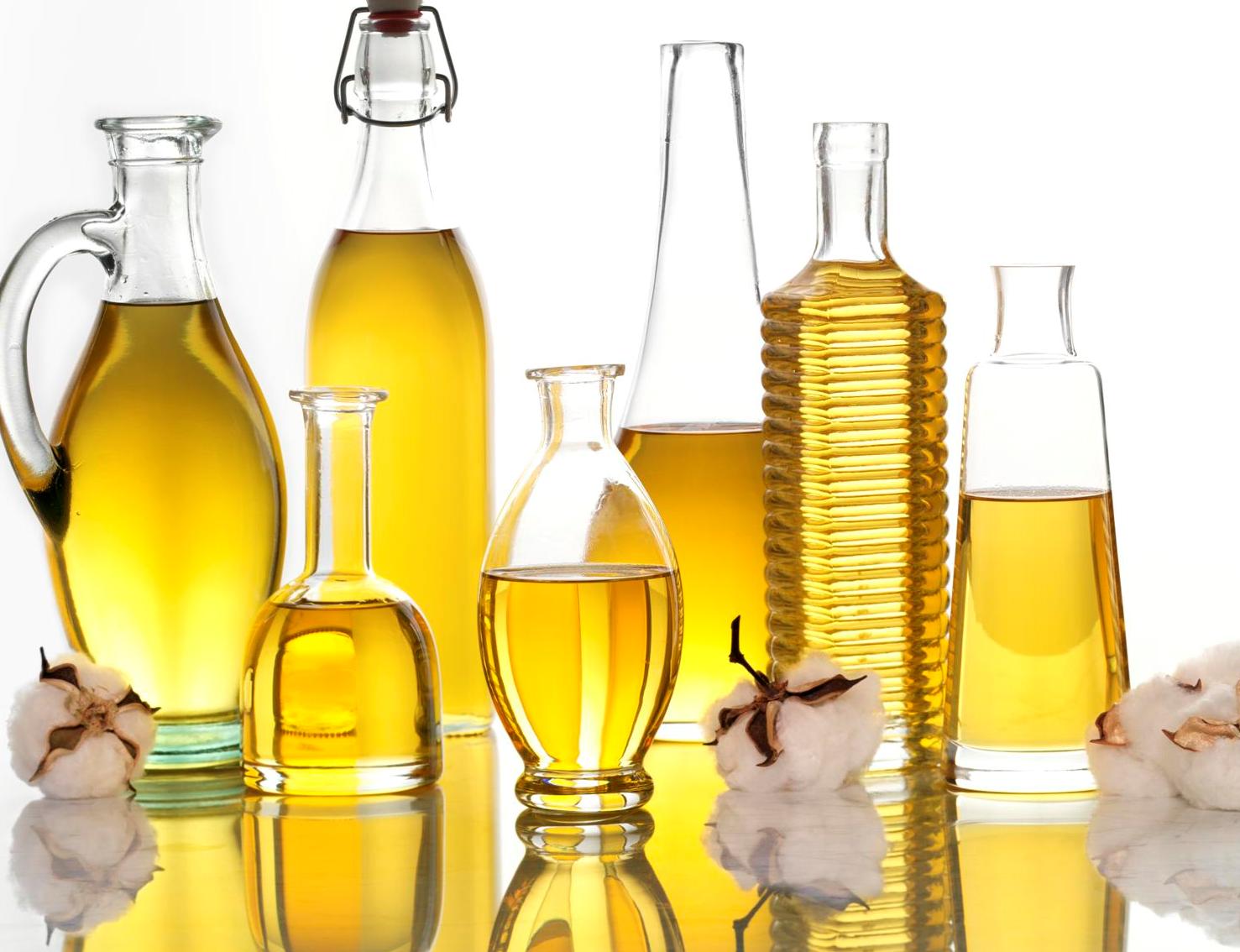Actualités
Rapeseed: The Anses asks to reinforce the monitoring of GMOs

In February 2022, Inf’OGM discovered transgenic rapeseed growing illegally in the port area of Grand-Couronne (near Rouen, Seine-Maritime, France). In July 2022, despite measures taken by the Ministry of Agriculture, new GMO rapeseed plants were found in the same area. The association also discovered transgenic rapeseed in Sète (Hérault, France). In both cases, the Saipol factory, which imports rapeseed to make agrofuels, seems to be responsible for this contamination. The Anses has just published an opinion and asks to reinforce the monitoring of GMOs in the environment. Will the ministry implement these recommendations?
After discovering transgenic rapeseed plants in February 2022 [1], Inf’OGM alerted the Ministry of Agriculture, which then asked the Anses (Agence nationale de sécurité sanitaire de l’alimentation, de l’environnement et du travail) to conduct an expertise [2] [3]. On Friday 20 January 2023, the Anses published its opinion [4].
First of all, the Anses opinion tells us that “the control services of the Ministry of Agriculture and Food Sovereignty took samples on 19 and 29 April 2022, which were analysed by the BioGEVES laboratory […]. These analyses have confirmed the presence of genetically modified rapeseed in the environment mentioned above”. Indeed, out of 16 samples taken in the port area of Rouen, 14 were found to be positive. The opinion also states that “as a result, at the beginning of May 2022, a destruction of rapeseed plants by mechanical means (mowing, brush cutting) was requested by the DGAl from the public establishment HAROPA Port, in charge of the maintenance of the industrial port area (excluding industrial sites). It was planned to repeat this operation every month, to avoid that the possible regrowths flower and so that they do not produce pollen or seeds which could germinate in the long term”.
We note from this opinion that the Ministry of Agriculture and the Anses were only interested in the port area of Rouen, whereas Inf’OGM had stated that it had discovered transgenic rapeseed in Sète.
The Anses opinion underlines that “the internal procedures implemented by the operator [Saipol, editor’s note] do not allow to respect the monitoring plan foreseen in the framework of the authorisation of these GM oilseed rapes, and to avoid the dissemination of seeds and the presence of GM oilseed rape plants”.
The Anses concludes that it is necessary to reinforce “the monitoring plans for environmental effects in order to make them more precise and demanding” and to have a better mapping of the areas at risk. Indeed, the Anses specifies that ports are not the only hotspots and that it is therefore also necessary to monitor “industrial sites storing or processing GM seeds [and] railroads, waterways and roads allowing the transport of goods between the aforementioned places”. As the Anses states on its website [5], “it is the authorisation holder and the operators handling these products who are responsible [for implementing the monitoring plan] to prevent any environmental risk linked to its release. In the case of the particularly volatile GM oilseed rape, the monitoring plan consists in particular of the implementation of procedures to limit losses and spills of seeds and the systematic eradication of plants present at the unloading and processing sites. Following its expertise, the Agency underlines that these monitoring plans contain gaps, in particular on the monitoring of the environment outside the sites of the operators concerned”.
Return on a predictable contamination
In February 2022, with the film crew of the program “On the Front” (France 5), we were in Rouen, near the Saipol factory (Groupe Avril), which imports rapeseed (partly transgenic) to produce agrofuels. On the side of the road, we had seen some feral rapeseed and, after analysis by an accredited laboratory, this rapeseed turned out to be transgenic. We reported on this discovery in the program and in an article on our website. We were not surprised by this result. Of course, we had only harvested a few plants, but rapeseed is known to spread very easily and to be able to grow back for ten years (dormancy). Scientists, French or British, as early as the end of the 90s, had warned about the extreme difficulty of managing a coexistence between two GMO and non-GMO rapeseed sectors [6] [7] [8]. Thus, limiting or even preventing contamination is a real challenge, yet there must be a clear will to limit it…
Transgenic rapeseed: a plant that is impossible to contain
The main problem with transgenic rapeseed is that its segregation is completely impossible, and it is for this reason that European governments banned its cultivation in the late 1990s. Rapeseed can remain in the ground (dormancy) for many years before waking up and growing. Thus, Anses explains in its report: “the observation of GM rapeseed plants in the spring of 2022 which may not only be 1era generation plants resulting from the germination of seeds dispersed by chance but also plants of later generations after reproduction”. In addition, rapeseed can cross with wild plants such as root, mustard, etc. Rapeseed is part of a botanical family very present on European soil. These data are confirmed again in this AAnses opinion. However, it should be noted that this transgenic rapeseed detected (but also the other GMO rapeseed resulting from mutagenesis, see box below) had been genetically modified to tolerate herbicides. However, a broad scientific consensus has shown that the use of varieties modified to be tolerant to a herbicide leads to an increase in the quantity of herbicide sprayed. Making agrofuels with rapeseed from the other side of the world, the cultivation of which leads to an increase in the quantity of herbicides, is to say the least curious… Herbicides, like maritime transport, have very significant impacts in terms of climate change.
This positive result gave us a hint. If these few plants are transgenic, it could be a sign of a significant presence of transgenic rapeseed in the environment, in Rouen but also in the vicinity of other Saipol plants. Inf’OGM then launched a call for donations in order to be able to carry out a wider survey. We had collected enough money to do some sampling and analysis, but not enough to be exhaustive and to take as many samples as we would have liked. However, the little we could do shows that transgenic rapeseed is indeed growing on the French territory and that the authorities seem to have a hard time to solve this problem.
We have harvested feral rapeseed in Bassens (Gironde), in Sète (Hérault), in the region of Mulhouse (Haut Rhin), in Dieppe and in Rouen (Seine-Maritime) in the vicinity of the Saipol plants.
The first important piece of information is therefore that everywhere around rapeseed crushing plants, feral rapeseed is growing. As we have already noted on several occasions, rapeseed is a plant species that spreads easily, that establishes itself easily.
In Mulhouse, Dieppe and Bassens, our samples were not positive. Let us specify right away that, due to a lack of sufficient means, we were not able to carry out the detection campaign that we wanted to. Mulhouse was of particular interest to us. Indeed, on several occasions, a few kilometers from this port on the Rhine, in Basel (Switzerland), transgenic rapeseed had been identified by researchers [9].
In contrast, in Sète, a port city on the Mediterranean, we identified several transgenic rapeseed plants. As in Rouen, part of its production is dedicated to agrofuels. Agrofuels of transgenic origin are not labeled because GMO labeling only concerns food products. Did the Ministry of Agriculture take the time to check with other Saipol plants to see if transgenic rapeseed was growing near the plant? It is impossible to know. The ministry never answered our questions about the precise action it took.
Despite the action of the ministry, transgenic rapeseed found 5 months later
The most worrying thing is the discovery, in July 2022, of new transgenic rapeseed plants in Rouen. Indeed, Saipol officials had told us that our”discovery » was anecdotal and Saipol’s communication director, Fabien Kay, had told us on April 13, 2022 that “the procedures put in place provide for daily cleaning of the seeds on the ground in the unloading area and for the destruction of rapeseed regrowth in the area in order to prevent any potential dissemination. The samples you took certainly took place before this cleaning phase”. Alas, as early as July we found some!
As for the Ministry of Agriculture, it replied on April 20, 2022: “Samples have already been taken by the ministry’s control services on rapeseed plants in the area where the detection of GMOs has been reported. The samples have been sent to a national reference laboratory for the detection of GMOs. If the analyses confirm the presence of GMO plants, the destruction of all rapeseed plants present in the area will be carried out and a follow-up of the regrowth will be set up over several years. The local services are in the process of organising this destruction”.
In theory, these two entities had done everything possible to avoid the presence of transgenic rapeseed. We seriously question their actions, which proved to be ineffective. This questioning was more than legitimate. Indeed, the Anses “concludes that eradication of the plants by mowing or mechanical clearing is not appropriate. [It] calls for the implementation of manual removal, or any other method allowing a complete destruction of the plants and their roots, at a regular interval allowing to anticipate the flowering of these plants”.
Rape seed: a relocated production?
The decline in domestic rapeseed production really started in 2018. Imports were therefore quite low, around 17% (872,000 tons in the 2017-2018 campaign for a production of 5.1 million tons)… [10]. Gradually the quantities imported have increased. Hémeline Macret, from the agro-economic research firm Tallage, informs us that “France imported, between July 2020 and June 2021, 1.7 million tons of rapeseed”, from Canada, Australia and Ukraine.
In its opinion, Anses notes that “the volumes of GM rapeseed imported by the Saipol plant have increased since 2016,” but that Saipol has refused to make the information public, asking that it be “covered by business secrecy.” However Saipol states on its website that in 2021, 53% of the rapeseed that this company processed came from French fields, 47% from imports [11]. Other information concerning these imports of transgenic rapeseed: “According to the data transmitted by the DGAl, between January 2021 and July 2022, 4 vessels of GM rapeseed were unloaded at the second port terminal: 2 in March 2021, 1 in February 2022 and 1 in July 2022”. Again, this data only concerns the port of Rouen… Partial information therefore.
The presence of transgenic oilseed rape is probably too low to worry the public authorities. The Anses, itself, considers “that a possible flow of gene by pollen could only lead to an extremely low rate of contamination given the differences in terms of number of plants between the source of pollen (GM plants at the level of the industrial-port area of Rouen – Grand-Couronne) and the plots cultivated with rapeseed”. However, the various recommendations of the Anses, such as a ten-year or ten-kilometer monitoring, show that this contamination could become problematic. The closest rapeseed fields to the Saipol plant are located between one and five kilometers away, which is “compatible with gene flow through pollen”.
The opinion of the Anses is a step in the right direction to avoid the dissemination of a transgenic plant on the territory. However, will the ministry of Agriculture take these recommendations seriously and actually implement them? This pleads for Inf’OGM to conduct new campaigns to ensure the concrete application of these measures…
Non-transgenic GMO rapeseed illegally grown in France
The transgenic rapeseed discovered in France by Inf’OGM should not mask the important illegal cultivation of non-transgenic GMO rapeseed. France does not respect the judgments of the Court of Justice of the European Union (2018) and the Council of State (2020). These two courts have clearly stated that plants obtained by a mutagenesis technique with no history of safe use should be regulated as GMOs. The Council of State is relatively clear: the so-called “directed” mutagenesis technique and the so-called “random” mutagenesis technique – applied to cell cultures in vitro – are subject to GMO regulations. However, in France, rapeseed made tolerant to a herbicide by a recent mutagenesis technique (random mutagenesis in vitro) is grown illegally.
In May 2020, the French government notified the European Commission of two decrees. The first one lists 96 varieties registered in the European catalog by countries other than France and “derived from random mutagenesis in vitro subjecting cultivated plant cells in vitro to chemical or physical mutagenic agents”. For these varieties, the government states that they “will be prohibited from being marketed and cultivated in France, as they have not been evaluated and authorised under GMO regulations”. The second cancels the registration of seven of them on a list in the French catalog of varieties whose seeds intended for marketing outside the European Union can be multiplied on French territory. Unfortunately, these two decrees were never formally adopted. The government is hiding behind the inaction of the European Commission and thus becomes its accomplice.
[1] <auteur_article7400>
[2] Ministère de l’Agriculture, Communiqué de presse “Plants de colza génétiquement modifié : Publication de l’avis de l’Anses à la suite de la saisie par le ministère de l’Agriculture et de la Souveraineté alimentaire”, 20 janvier 2023, https://agriculture.gouv.fr/plants-de-colza-genetiquement-modifie-publication-de-lavis-de-lanses-la-suite-de-la-saisie-par-le
[3] The purpose of the seizure was to “assess the adequacy of the measures for the destruction of genetically modified oilseed rape plants, to identify possible complementary measures to avoid any persistence of these genetically modified oilseed rape plants in the environment, as well as to formulate recommendations on appropriate monitoring measures”. As part of its work, the Anses heard Inf’OGM. The hearing mobilised many people from the Anses[[Ms. EYRAUD (Scientific Coordinator for the Mission “Biotechnologies”, responsible for the referral), Ms. PIC (Scientific Coordinator for the Mission “Biotechnologies”, scientific support for the referral), Mr. EL OUADRHIRI (Head of the “Biotechnologies” Mission) and Mr. BAUDRIN (representative of the Social Sciences, Expertise and Society Mission) and three members of the Anses “Biotechnologies” Working Group (WG): Mr. GUILLOU (WG Chairman), Ms. LE CORRE, Mr. OCHATT
[4] Anses, “Extrait de l’Avis du 17 janvier 2023 de l’Agence nationale de sécurité sanitaire de l’alimentation, de l’environnement et du travail relatif à l’évaluation des mesures de gestion faisant suite à une dissémination” accidentelle “de colza génétiquement modifiée dans l’environnement”, 20 janvier 2023, https://www.anses.fr/sites/default/files/BIOT2022SA0101-1.pdf
[6] <auteur_article1310>
[7] <auteur_article1452>
[8] <auteur_article6870>
[9] , « SUISSE – Graines viables de colza OGM importées avec du blé canadien », Inf’OGM, 7 September 2015
[10] Rape imports on the rise to offset the fall in production 2018, Terre-net.fr, 31 October 2018, https://www.terre-net.fr/colza/article/142689/des-importations-de-colza-en-hausse-pour-pallier-la-chute-de-la-production-2018





